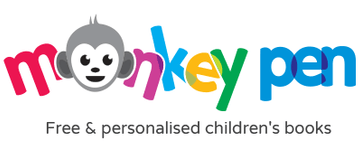Building Independence: Age-Appropriate Coloring Challenges
Nov 11, 2025
Understanding Age-Appropriate Challenges
Discuss challenges that are appropriate for a person's age. It is about creating tasks that aren't too easy (which could lead to boredom) or too complex (which results in frustration). As children develop, each stage of development comes with the opportunity to develop their strengths and weaknesses. For instance, toddlers will be able to thrive in big shapes and plenty of play. A preschooler will be able to handle more details and begin to refine their skills. An early school-age child can work independently on longer projects and examine their work. If we match the difficulty degree to the child's developmental stage, we can open the way to a meaningful learning experience and enjoyment.
Coloring Activities by Age: Building Independence and Skills
Youngsters (2-3 years) at this age, toddlers are still learning to grip, their wrist control, and the ability to pay attention. Please provide them with large, simple coloring pages with big shapes and minimal details--and let them choose the colours they prefer. The aim is to allow selection and then completion: "Pick your page, colour what you like, then show me your work." Through this, the child can exercise choices, have a go at completing something, and be proud of "I did it myself."
The preschoolers (3-5 years). The children can take on more of a structure. Give them outlines of simple pictures (animals or objects) and ask the children to choose their own colours, or offer two coloring-by-numbers zones. Instruct them to stop once they're done and reflect on what they have done: "What did you enjoy?" This phase involves making choices (which colours should you use, which and where) and staying within the boundaries (lines) and reviewing your work. This is all about building independence.
Early school age (5-7 years old and up to). It is now possible for children to tackle longer pages or even the theme (e.g., "Underwater scene"), choose the color scheme, and then test their own creativity ("I'll try to shade this portion"). Help them pick the pages themselves, decide on an end date, and even present the work they've created to their child or a parent, and share their thoughts. The focus shifts towards self-monitoring reflection, completing the task independently. Each of these tasks will provide the right amount of challenge for an age-appropriate level while fostering absolute independence.
Practical Tips for Parents & Teachers
Make an inviting coloring station. It should include markers or crayons and a book or a timer for appropriate occasions, but let your child decide the time to begin.
Give them options: "Do you want this page or that one?" "Will you use five colours or ten?" This places the child in charge.
- Gradually increase your challenge. When the child has mastered basic pages, add a more elaborate page, one featuring themes or a "colour-by-number" section.
Focus on independence and effort instead of perfection: say "You chose those colours and finished it by yourself!" instead of "You stayed inside the lines perfectly." This helps to foster an increase in mindset.
Add a reflection. When you're done, you can inquire, "What part was easiest/hardest?" "If you colour another page, what might you try differently?" This will help the child think more independently about their experience.
- Establish a routine: A regularly scheduled time to colour independently can help the child understand the fact that it is their time of choice, their task. As time passes, it becomes routine, and the child's independence grows naturally.
Why It Matters: Long-Term Benefits of Building Independence Through Colouring
If children are regularly engaged in activities of independent coloring that align with their developmental level, they don't just have a moment of fun, but they also increase self-control, confidence, and decision-making abilities. In time, the process of coloring by itself becomes part of a bigger pattern that includes: I can begin and then decide when I can end. These behaviors help with school readiness because fine motor control helps with drawing and writing. They aid in self-care because children who are used to working on the tasks are more comfortable when they do other tasks that they are able to complete independently. When we give children the right level of challenge and allow them to do things on their own, we send a powerful message: "I believe in you. You can do this." This simple trust builds confidence and independence.
Building Independence Simply Through Colouring Activities
Colouring activities, when matched to a child's age and ability, are much more than a fun pastime—they help children learn to work independently. As teachers, parents, or caregivers, offering the right mix of guidance and freedom lets children proudly say, "I did it myself!" So why wait? Visit Monkey Pen's collection of free printable colouring pages, pick one your child can enjoy and complete alone, and watch their independence grow with every crayon stroke.
The website also offers various educational resources, including posters, children's books , and dot-to-dot workbooks. All are available in PDF format at absolutely no cost.


